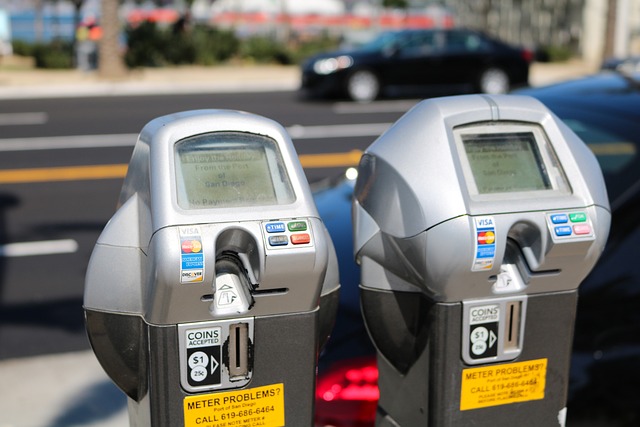Futu Trading Fee Explained 2025
Author: Jameson Richman Expert
Published On: 2025-10-24
Prepared by Jameson Richman and our team of experts with over a decade of experience in cryptocurrency and digital asset analysis. Learn more about us.
Futu trading fee expectations are changing in 2025 as brokerages compete on commissions, margin rates, currency conversion and exchange-specific charges. This guide explains exactly what types of fees Futu (including its Moomoo platform) may charge, how to calculate total trading costs, comparisons with competitors, and practical steps to minimize what you pay — backed by examples, authoritative sources, and further reading.

Quick overview: what this article covers
- Types of fees you may encounter on Futu (commissions, spreads, exchange & regulatory fees, FX conversion, margin interest, deposit/withdrawal).
- Sample fee calculations for US and Hong Kong stock trades.
- How Futu compares to alternatives and crypto exchanges (with sign-up links).
- Ways to reduce your overall trading costs and trading-style tips.
- Regulatory and religious/ethical considerations for margin and forex trading.
- Related in-depth resources and practical next steps.
What is Futu and why fees matter
Futu Holdings Limited operates digital brokerages such as Moomoo, offering access to US, Hong Kong and other markets. Like any broker, Futu’s headline commission (often advertised as low or zero) is only one element. The total cost of a trade includes exchange fees, regulatory levies, FX conversions, margin interest, and other platform charges. Understanding the full picture helps investors avoid surprises and improves net returns over time.
For background on brokerage roles and industry structure, see the Wikipedia article on brokers for context: Broker (finance) — Wikipedia.
Core components of a Futu trading fee
Here are the main categories that typically make up what you pay when trading through Futu/Moomoo or similar brokerage platforms:
1. Commission (or advertised fee)
Many platforms advertise “commission-free” trading for certain instruments (commonly US stocks). Where commissions apply (e.g., some international markets, margin trades or professional accounts), they can be either a flat fee per trade or a percentage of trade value. Always check the fine print for excluded activities and conditions for zero-commission eligibility.
2. Exchange and regulatory fees
Exchange bodies and regulators often charge per-share or per-trade levies that brokers pass to customers. For example, in the U.S. there are SEC or clearing fees applied to sales that can be tiny but noticeable for frequent traders. For reliable information about U.S. regulatory transaction fees, consult the SEC’s guidance on transaction fees: U.S. Securities and Exchange Commission.
3. FX conversion fees
Trading in markets with a different settlement currency triggers currency conversion. Brokers either apply a markup on the interbank forex rate or charge an explicit conversion fee. For investors trading US stocks from Asia or vice versa, FX spreads/add-ons can be a material part of total costs.
4. Margin interest
Borrowing to trade (margin) incurs interest charged daily on borrowed balances. Margin rates vary widely by broker, account type, and borrowed currency. If you plan to hold leveraged positions, margin cost is a major ongoing expense — and an area where small percentage differences compound quickly.
5. Clearing, custody and inactivity fees
Brokers occasionally charge custody or account maintenance fees, and some apply inactivity fees if an account is dormant for a long period. Futu’s policy on such fees should be confirmed directly in their fee schedule or account terms.
6. Withdrawal, deposit and banking fees
International bank transfers, third-party payment processors and crypto on/off ramps may incur fees. Some brokers waive inbound deposit fees but charge for withdrawals, or limit free withdrawal amounts per month.
7. Order routing & market data
Premium real-time market data, level 2 data, or advanced order types can carry subscription fees. Also, whether a broker routes orders to exchanges, market makers or internalizes flow may affect execution quality and hidden costs (slippage).

Futu (Moomoo) — typical fee structure (what to check)
Futu’s exact fee schedule can change by region, account tier and product type. When evaluating, confirm:
- Commission policy for US, HK and A-shares (if available).
- Per-trade exchange/regulatory pass-through fees (e.g., SEC assessments on sales).
- Currency conversion rates and where FX is applied (at order, settlement or withdrawal).
- Margin interest rates by currency and loan size.
- Minimums, inactivity, custody and withdrawal fees.
Always read the official fee schedule inside the app or on Futu’s corporate website and compare to independent sources and community feedback before depositing significant capital.
Concrete examples: calculating total cost of a trade
Below are two hypothetical examples to show how different fee elements add up. Figures are illustrative — replace with real numbers from your account.
Example A — US stock buy and sell (small investor)
- Buy 100 shares at $50 = $5,000 purchase.
- Commission: $0 (advertised commission-free).
- SEC fee on sell (approx. 0.0000219 of gross sale value — example) may apply only to sales; assume negligible for buy but present on sell.
- Spread/slippage: assume $0.02 per share on execution = $2.
- FX conversion: if funding account in HKD and converting to USD, assume 0.5% markup = $25 on $5,000.
- Total implicit cost on buy ≈ $27 (spread + FX markup). On sell, add SEC/regulatory fee and another FX conversion cost for repatriating USD.
Net result: small percentage-level costs that become meaningful if you trade frequently or with large volumes.
Example B — Hong Kong stock trade for international investor
- Buy 1,000 shares at HKD 10 = HKD 10,000.
- Commission: 0.25% min HKD 20 = HKD 25.
- Stamp duty and exchange fees: Hong Kong charges stamp duty on share transfers (approx. 0.13% of value) and exchange/CCASS fees may apply.
- FX: if conversion required between HKD and base currency, include conversion costs.
- Total fees could be HKD 50–150 depending on size and conversions.
Lessons: commissions can be tiny for large trades but exchange and regulatory fees, plus FX, still matter.
Volume tiers, rebates and rebates mechanics
Higher-volume traders can often access lower commission tiers or rebates. Platforms may offer maker/taker pricing or rebates for providing liquidity. For a primer on what “high volume” means and how it affects fees, see this in-depth analysis: What Does "High Volume" Mean in Trading?

Comparing Futu fees with competitors
When comparing, consider total cost of ownership — commission + FX + margin + data. Some alternatives include traditional brokerages, local banks, or global online brokers. For crypto trading, exchanges like Binance, MEXC, Bitget and Bybit compete on maker/taker fees and leverage pricing; below are sign-up links you can review if you trade crypto as part of your portfolio:
- Binance (register): Sign up at Binance
- MEXC (register): Sign up at MEXC
- Bitget (register): Sign up at Bitget
- Bybit (register): Sign up at Bybit
Note: crypto exchanges have different fee models (maker/taker, margin perpetual funding rates). If you are switching between spot equities and crypto, treat them as separate cost analyses.
Advanced fee considerations
Order routing and execution quality
Execution quality affects realized spreads and slippage. A “zero commission” order routed to a market maker that internalizes trades might result in slightly worse price execution compared to a routed order. Review available execution reports or seek community feedback on Futu’s order routing performance.
Soft dollar and order flow
Some brokers receive payment for order flow (PFOF) — check whether that is applicable to Futu in your region. PFOF can be legal and allowed but may influence execution. The debate around PFOF and investor impact is covered in regulator reports including the SEC website on market structure: SEC — Market Structure.
Tax withholding and reporting
Cross-border trades may trigger withholding taxes, stamp duties, or different reporting. These are not brokerage fees but affect net return and should be considered in your comparison of brokers.
Margin, leverage and religious/ethical concerns
Margin interest is a clear financial cost. Some investors also have religious or ethical considerations about leverage and interest payments. For example, articles exploring whether margin trading or exchange margin is halal/haram in Islamic finance provide detailed perspectives and can be informative if this is relevant to you:
- On crypto margin and Islamic finance: Binance Margin Trading — Halal or Haram?
- On forex and Shia Islam perspective: Is Forex Trading Halal in Shia Islam?
If religious compliance matters, consult a qualified scholar and compare margin, interest-free accounts (if any), or Sharia-compliant financial products.

Copy trading and social trading fee structures
Futu’s platforms and other brokers sometimes offer social features like copy trading where fees can be structured as subscription, performance fee (percentage of profits) or spread markup. Before copying traders, verify the fee split and hidden costs. For community-sourced feedback, reviews like this Reddit-focused review of copy trading can be useful reading: Copy Trading Review — Reddit Insights for 2025.
How to minimize your Futu trading fee burden — practical steps
Below are actionable ways to reduce the effective fees you pay whether you trade with Futu or another broker.
- Consolidate trades — Combine small orders into larger ones to reduce per-trade fixed costs and spread impact.
- Use limit orders strategically — Limit orders can reduce adverse spread costs and slippage versus market orders, especially in less liquid stocks.
- Choose the right currency — If you trade in multiple currencies, maintain balances in settlement currency to avoid repeated FX conversions.
- Check volume tiers — If you are a high-volume trader, request tiered pricing or institutional rates; some platforms offer negotiated margins or rebates.
- Compare brokers for margin — Small differences in margin rates compound — shop around for lower margin interest if you use leverage frequently.
- Watch for hidden fees — Review account statements and fee schedules for custody, data, inactivity or withdrawal costs.
- Use tax-efficient accounts — Where available, tax-advantaged accounts can improve after-tax returns (rules vary by country).
- Monitor execution quality — If a “cheap” broker consistently gives worse fills, higher slippage may negate headline savings.
Comparing total cost: scenario-based checklist
When testing Futu against another broker, use this checklist and run the numbers:
- Commission per trade (buy and sell)
- Average spread or expected slippage
- FX conversion markup and frequency
- Expected margin interest rate and average borrow balance
- Exchange/regulatory fees on sales
- Withdrawal/deposit fees and timing
- Market data subscription costs
- Special features cost (copy trading performance fees, strategy fees)

Where to find reliable user feedback and safety checks
Community feedback is a useful complement to official fee schedules. For users in India and other regions, safety and legitimacy reviews of trading apps can be essential before onboarding funds — see this in-depth guide to legitimate trading apps in India: Which Trading App Is Legitimate and Safe in India — In-Depth Guide.
Additionally, look up broker regulatory registrations (e.g., FINRA BrokerCheck in the U.S., Hong Kong SFC, or your local regulator) to confirm licensing and any disciplinary history. For general investor protection guidance, consult your national regulator’s site (for example FINRA in the U.S.: FINRA).
Special notes: crypto trading vs equities trading fees
Crypto exchanges have distinct fee mechanics:
- Spot fees: maker/taker pricing and potential rebates.
- Derivatives: funding rates, perpetual swap spreads, and margin interest can be significant.
- Deposit/withdrawal network fees (blockchain gas) are separate from platform fees.
Compare spot equities to crypto carefully: while broker commissions for stocks have trended to zero, derivatives and perpetuals in crypto can incur ongoing costs (funding) that change over time.
Regulatory, safety and disclosure considerations
Fee transparency and regulatory oversight vary by jurisdiction. High-quality brokers provide clear, up-to-date fee schedules and required disclosures. Check:
- Whether the broker is registered with your local regulator
- How client assets are held (segregated custody, insurance)
- Record of disciplinary actions or investor complaints
Resources: For market structure and fee-related policy in the U.S., the SEC’s pages on market structure and investor protection are useful: SEC Market Structure.

When fees aren’t everything: other factors to weigh
While cost is essential, consider these complementary factors:
- Execution speed & reliability
- Product access (markets, instruments) and order types
- Platform usability and research tools
- Customer service quality (phone, chat, local support)
- Educational resources and community features
For example, if you value social features like copy trading, read independent reviews and community feedback before committing. See a copy trading review that aggregates Reddit insights here: Copy Trading Review — Reddit Insights for 2025.
Practical checklist before opening a Futu account
- Read the fee schedule for your jurisdiction (US, HK, Singapore, etc.).
- Confirm commissions, exchange/regulatory pass-through fees, and FX policy.
- Check margin interest rates and how interest accrues.
- Test small trades to examine real execution and slippage.
- Evaluate deposit/withdrawal methods and fees.
- Consult community reviews for execution quality and support responsiveness.
- If religious/ethical constraints matter, review margin/interest guidance (see cited articles above).
Case studies: how small differences compound
Consider two active traders each trading $5,000/day with 20 trading days/month. Trader A uses Broker X with a 0.10% commission and 0.25% FX markup. Trader B uses Broker Y (e.g., Futu) with zero commission but 0.5% FX markup and slightly worse execution by 0.02% per trade. Over a year, small per-trade differences in FX markups and slippage add up to hundreds or thousands of dollars — often more than headline commission savings. That’s why total-cost-of-trade analysis matters, not just zero-commission marketing.

Further reading and resources
- High-volume trading concept and impact: What Does High Volume Mean in Trading?
- Trading app legitimacy and safety (India): Which Trading App Is Legitimate and Safe in India
- Margin trading and Islamic finance discussion (crypto-specific): Binance Margin Trading — Halal or Haram?
- Forex trading from a Shia Islam perspective: Is Forex Trading Halal in Shia Islam?
- Copy trading review community insights: Copy Trading Review — Reddit Insights for 2025
Final recommendations
Futu trading fee transparency is generally good but, like any broker, you must dig beyond the headline and calculate the full cost of trades — commissions, exchange fees, FX conversions and margin. For frequent traders, negotiating tiered pricing, consolidating orders, and comparing margin rates can save materially. For investors who prioritize safety and compliance, confirm regulatory registration and read independent reviews.
If you trade crypto as part of your portfolio, compare crypto platforms’ fee models and funding rates as well — consider the exchange links above if you want to research alternatives in parallel:
Frequently asked questions (FAQ)
Does Futu charge commission for US stocks?
Policies change by region and promotion. While many brokers, including Futu’s Moomoo product, have offered commission-free US stock trading, always confirm the current fee schedule and any conditions or product exclusions.
How can I verify the real cost of a trade?
Run a test trade, inspect the execution report, and tally: commission + exchange/regulatory fees + FX conversion + slippage. Compare with another broker by replicating the same trade timing and size.
Are there hidden fees I should watch for?
Watch for custody fees, data subscriptions, inactivity charges, and withdrawal fees. Also confirm how FX conversions are performed and recorded.
Is margin trading cost-effective?
Margin may amplify returns but interest charges and market risk increase losses equally. Compare margin rates and ensure you model the interest cost vs expected return before using leverage.

Closing
Understanding the full structure behind the phrase futu trading fee is essential to making informed trading decisions in 2025. Always combine the official fee schedule with real-world test trades and community feedback, and consider the total cost — commissions, FX, margins and execution quality — rather than a single headline number. For related practical guides on platform legitimacy, high-volume trading, margin religious considerations, and copy trading community reviews, consult the links above.